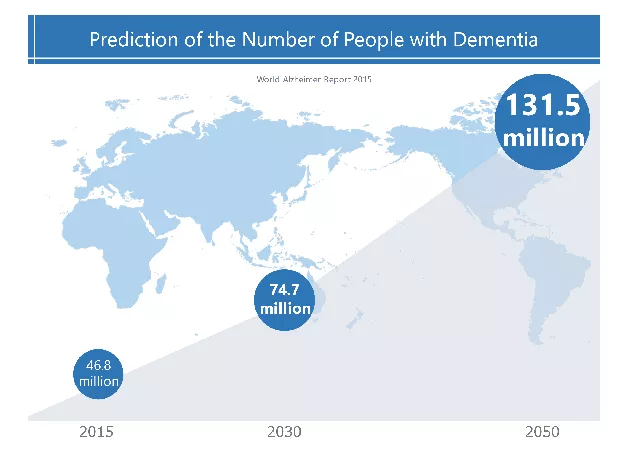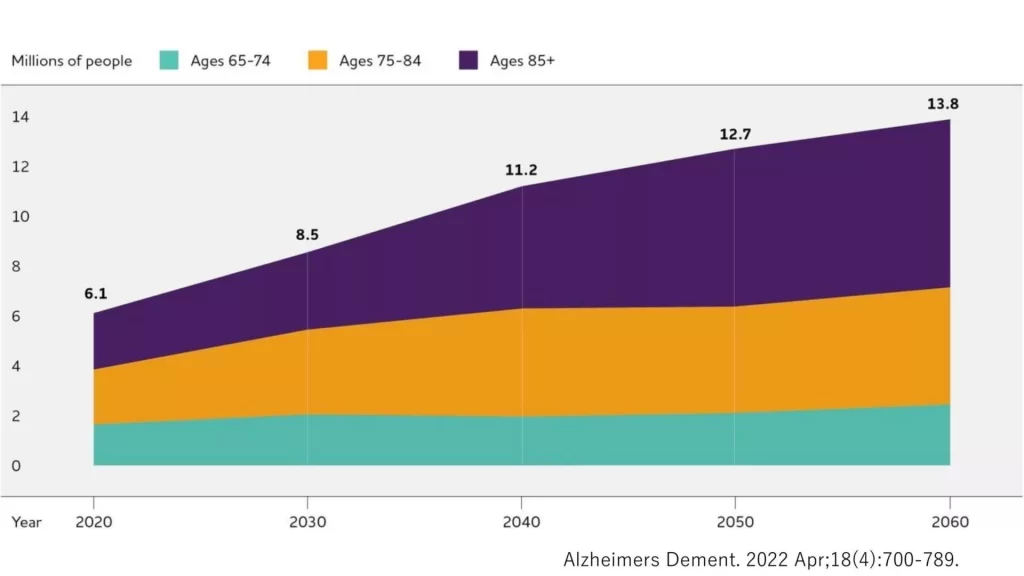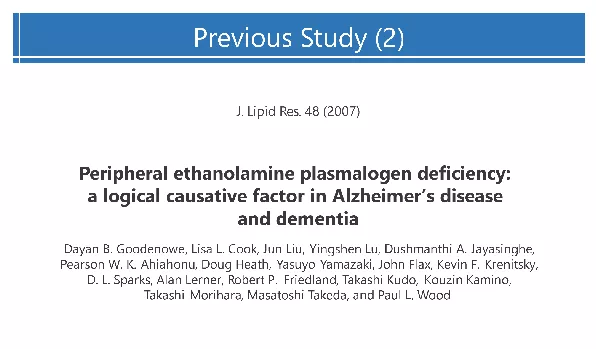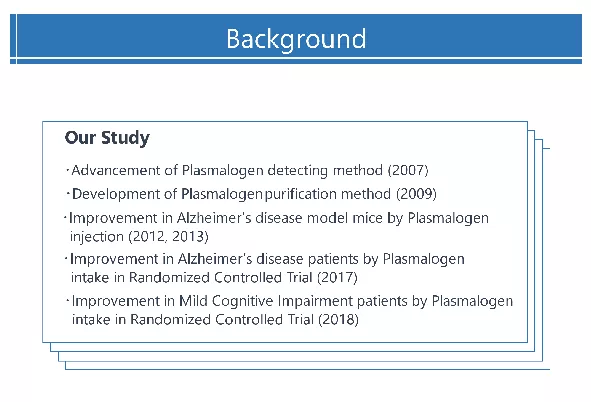Prediction of the number of people with dementia

Statistics from Alzheimer's Disease International
Alzheimer’s disease is one of the most common form of dementia which accounts for 60 to 80% of all dementia cases. Statistics from Alzheimer’s Disease International record approximate 44 million people worldwide living with Alzheimer’s disease or related dementia in 2016. It is the 6th leading cause of death in the United States, with one in three elderly dying of Alzheimer’s or other forms of dementia. Alzheimer’s may be among the costliest diseases for societies in Europe and the United States.

Previous Study (1)

Previous Study (2)

First, let me begin with the background of our study. These our studies made it possible for us to perform our clinical study.
This slide outlines the progress of research on Pls, focusing on their association with Alzheimer’s disease. Research on Alzheimer’s disease was initially led by the United States; in 1995 and 1999, reduced levels of Pls in the brains of cadavers with Alzheimer’s disease were noted, and, subsequently, in 2007, reductions in the serum levels of Pls in living patients with Alzheimer’s disease were reported.
In Japan, we succeeded in developing a new, advanced detection method for Pls in 2007.
We also developed a method for the extraction and production of high – purity Pls in 2009. The development of these methods facilitated the administration of Pls to animals and humans.
Furthermore, we publis hed research papers in 2012 and 2013 reporting that Pls were effective in rats with Alzheimer’s disease, and in 2012 that the levels of Pls were reduced in the erythrocytes of patients with the disease. We conducted a randomized double – blind placebo – contro lled trial involving humans from Nov. 2014 to Apr. 2016
Background

It is described that high – performance liquid chromatography can separate intact ethanolamine plasmalogens and choline plasmalogens as well as all other phospholipid classes by a single chromatog raphic run.
Extraction Method of Plasmalogen

